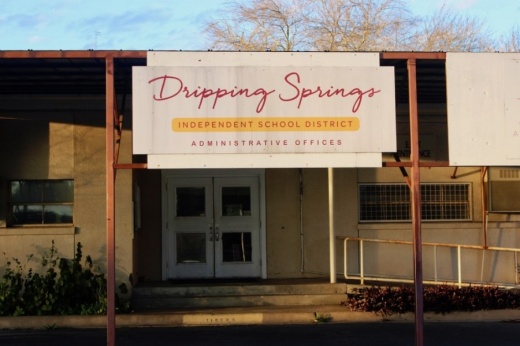The maps presented March 2 are options that were adjusted in response to community feedback received at the first public meeting Feb. 1. The updated maps—shown below as Option C and Option D—would make students from The Views at Belterra community eligible to attend Rooster Springs Elementary School. At the Feb. 1 meeting, parents residing in The Views at Belterra had raised objections about a lengthy commute away from the "community school" they had purchased homes with the intention of attending. The original maps presented Feb. 1 are not currently under consideration.
The two maps shown above differ in their proposed zoning of Planning Units 27 and 28, which would be zoned to Walnut Springs Elementary under Option C and to Cypress Springs Elementary under Option D.
A third map was also presented—shown below as Option E—under which Planning Units 30, 31, 32 and 34A are all zoned to Walnut Springs instead of Cypress Springs. Under this option, Cypress Springs would open at a smaller capacity, around 540 students, according to Clint Pruett, DSISD director of facilities and construction.
Option E was developed, Pruett said, based on consideration of middle school feeder patterns. Under this option, if the district's current middle school feeder patterns were maintained, only Sycamore Springs Elementary's students would be divided between the district's two middle schools. Under Options C and D, Cypress Springs students would also be split between Sycamore Springs Middle and Dripping Springs Middle.
DSISD could opt to implement new feeder patterns along with the zone changes. A second option discussed March 2 would be to funnel all students from Dripping Springs, Walnut Springs and Cypress Springs elementary schools into Dripping Springs Middle and to send all Rooster Springs and Sycamore Springs students into Sycamore Springs Middle.
According to Pruett, one of the committee's guiding charges "is to design attendance zones that place students in schools in the closest possible geographic proximity of their residence." However, given that DSISD has an odd number of elementary schools and an even number of middle schools—and uneven capacity at the two middle schools—that charge is difficult, he said.
"Especially in a fast-growth district that's spread out over roughly 200 square miles, trying to meet all of those parameters 100% of the time in every option becomes very difficult," Pruett said. "For example, the ability for 100% of all students and every household to attend the school closest to their to their home becomes virtually impossible because if you tried to do that, you would end up with particular campuses that would be significantly overcrowded."
Some parents called into the meeting with concerns about their planning units' rezoning, including multiple individuals who live in Planning Unit 20A, which, under certain feeder options, would be zoned to Sycamore Springs Elementary but would not feed into Sycamore Springs Middle. Parents from the Reunion Ranch community echoed this concern, citing hypothetical 30-minute bus rides that would pass Sycamore Springs on the way to Dripping Springs Middle.
"What that means, particularly for a child going from fifth grade to sixth grade, ... [is] leaving their support system, leaving a large majority of their friends who would still be zoned to Sycamore Springs Middle School, and putting them on a bus for an hour," said one parent from Planning Unit 20A. "They're zoned for one side of the campus at Sycamore but not zoned for the other entrance on the same campus."
A third community meeting to discuss attendance zones is scheduled for March 9. The board of trustees is set to vote on the new zones March 29.





